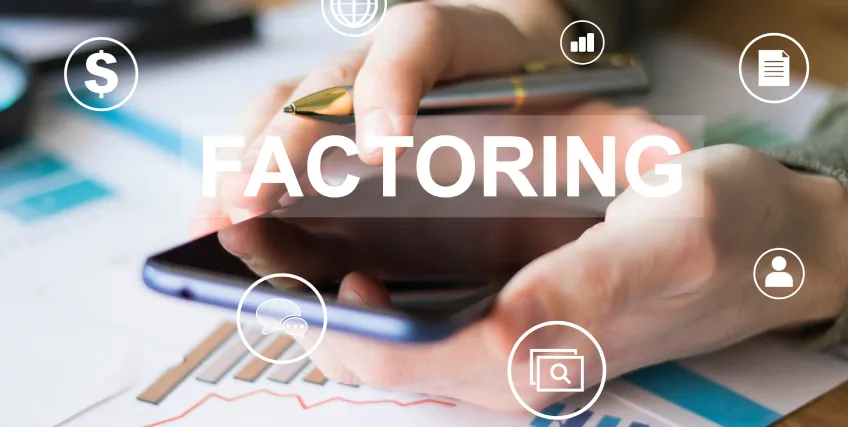The Complete Guide to the Cost of Invoice Financing
Jul 3, 2025 | Last Updated on: Jul 7, 2025

Businesses are always looking for ways to expand their financial opportunities. One powerful tool is invoice financing. Invoice financing helps companies unlock cash that is tied up in unpaid invoices. Invoice financing is a popular option for small and medium businesses because it offers fast access to working capital without having to wait for customers to pay.
However, the cost of invoice financing can be surprising and understanding the cost of invoice financing is crucial for making informed decisions for your business. In this guide to the cost of invoice financing, we cover everything from how invoice financing works to what types of fees are involved, pricing models, and the factors that influence total cost.
The Cost of Invoice Financing Defined
Invoice financing gives businesses the option to borrow money against the amounts due from customers. Invoice financing comes in two main forms:
- Factoring Invoice Financing: In this form, a business sells its invoices to a financing company (factor), which then takes responsibility of collecting payments from customers.
- Invoice Discounting: In this form, a business will borrow against unpaid invoices, but remains responsible for control over collections.
Both invoice financing methods provide early access to funds, with the financier taking a fee or discount in return.
Why Use Invoice Financing?
Businesses often use invoice financing for a multitude of reasons. Here are some reasons as to why businesses would look to invoice financing options:
- The opportunity to improve cash flow
- Access to pay suppliers or employees
- Get ahead of early payment discounts
- Finance business expansions
- Cover short-term gaps in working capital
Invoice financing is extremely useful in sectors with long payment terms, such as manufacturing, construction, and wholesale. However, with the cost of invoice financing, it is not considered a long-term financing solution.
How Does Invoice Financing Work?
Along with getting on board with the cost of invoice financing, it is essential to understand the basics of invoice financing. Here are the steps to how invoice financing works:
- Send an Invoice: The business invoices the customer.
- Submit the invoice: The invoice is sent to an invoice financing provider.
- Get Payment: The financing provider advances a percentage of the invoice value (usually 70–90%).
- Customer Payment: The customer will eventually pay the invoice.
- Remainder Paid Back: Once the invoice is settled, the remaining balance is released to the business minus fees.
Understanding the Cost of Invoice Financing
The cost of invoice financing includes several components. As we dive deeper into the cost of invoice financing, pricing can vary widely depending on the provider. But, let’s look at the most common types of invoice financing fees:
a. Discount Fees (or Interest Rates)
This is the main cost of borrowing and is like interest on a loan. It's usually calculated daily, weekly, or monthly as a percentage of the invoice amount. Discount fee rates typically range from 1% to 5% per 30 days, depending on the amount and the risk associated with the fee.
b. Service Fees (or Administration Fees)
Some providers charge a fixed percentage for managing the service, especially in factoring arrangements. This covers the cost of processing invoices, collections, and account management.
c. Startup Costs
One-time charges for account setup, legal paperwork, and credit checks. Some providers waive these fees depending on the size of your business or volume of invoices.
d. Minimum Fees
Some contracts require a minimum monthly volume. If the minimum is not met, you could be charged the difference.
e. Renewal or Exit Fees
Some providers charge renewal or early termination fees. These are often associated with long-term contracts.
Pricing the Cost of Invoice Financing
There are generally two pricing models to be aware of when researching the cost of invoice financing. These pricing models include:
1. A Flat Fee Rate
A single flat fee model means that the charge is the same regardless of how long the invoice remains unpaid.
- Pros: Simple, predictable.
- Cons: You pay the full fee even if the customer pays early.
2. A Tiered or Time-Based Fee Rate
This invoicing model requires that the fee increases the longer the invoice is unpaid. This is more flexible and often fairer to businesses with quick-paying customers.
What Factor Affect the Cost of Invoice Financing?
There are several factors that can influence the cost of invoice financing and how much you’ll pay. Here are some of the factors to consider:
The Invoice Amount
Larger invoices will often get lower rates due to the scale of the cost.
Creditworthiness of the Customer
If your customer has a strong payment history or solid credit score, the financial provider will offer a better rate because there is less risk associated with your customers.
Industry Risk
Certain industries, like construction or transportation, are considered riskier to financiers. Because of the higher risks, you can expect for those industries to have higher fees.
Amount of Invoices
If your business is regularly financing a high volume of invoices, it can help negotiate better rates.
Terms of Payment
Longer payment terms means that cost of invoice financing is higher. For example, a 90-day invoice will accumulate more fees than a 30-day one.
Solid Credit History
Businesses with good credit scores and financial history may get preferential rates and a more accommodating cost of invoice financing.
Invoice Factoring vs. Invoice Discounting: Cost Comparison
|
Feature |
Invoice Factoring |
Invoice Discounting |
|
Control over collections |
Factor |
Business |
|
Cost |
Slightly higher (service fee) |
Lower (no collections fee) |
|
Transparency |
Customer aware |
Customer not aware |
|
Best for |
Smaller firms, limited admin |
Larger firms, full credit control |
Invoice discounting can be cheaper but requires robust internal credit controls. Invoice factoring is more hands-off but comes with higher service costs.
Comparing Invoice Factory Lenders
When evaluating providers, ask about invoice factoring cost. Here are some concerns that businesses should research ahead of time:
- Fee structure (flat vs. tiered)
- Advance rates
- Credit checks for your customers
- Hidden fees (setup, exit, minimum volume)
- Contract flexibility
- Customer service offerings
Invoice financing providers can include banks, online lenders, or specialist finance firms. Interest rates and services can differ widely for each.
How to Reduce the Cost of Invoice Financing
Here are strategies to lower the cost of invoice financing:
1. Improve Your Customer Base
Target clients with better credit scores to reduce perceived risk.
2. Shorten Payment Terms
Encourage clients to pay earlier by offering small discounts.
3. Finance Selectively
Only finance high-value or long-term invoices when needed.
4. Shop Around
Compare multiple providers. Use online comparison tools or brokers.
5. Use Volume to Negotiate
If you have regular financing needs, use your volume to negotiate better rates.
Pros and Cons of Invoice Financing
Pros:
- Immediate cash flow
- No long-term debt
- Scales with sales
- Fast and flexible
Cons:
- Can be expensive
- May impact customer relationships
- Requires ongoing administrative work
- Not all invoices qualify
Is the Cost of Invoice Financing Right for You?
Invoice financing makes sense if your business:
- Is growing and needs flexible cash flow
- Has reliable customers but long payment terms
- Faces occasional cash flow gaps
- Doesn't want to take on traditional debt
However, if your budget and financing terms are already tight, the cost of invoice financing may outweigh the benefits.
Invoice Factoring Lenders: Who They Are and How They Work
Staffing Invoice factoring lenders play a central role in the invoice financing process, particularly when businesses choose factoring over discounting. Invoice factoring lenders not only advance cash based on outstanding invoices, but also take on the responsibility of collections.
Let’s break down the different types of factoring lenders, how they operate, and what you should know when choosing one.
Types of Invoice Factoring Lenders
There are several categories of lenders in the invoice factoring space, each with distinct characteristics:
1. Traditional Banks
- Who they serve: Well established organizations with good credit
- Pros: Competitive rates, solid reputations
- Cons: Slower approval process, restrictive eligibility
Traditional banks offer factoring as one of many financial services. Businesses with poor credit may not qualify because banks are often risk adverse.
2. Independent Factoring Companies
- Who they serve: SMEs, startups, seasonal businesses
- Pros: Flexible underwriting, with industry-specific knowledge
- Cons: More costly, quality service is not guaranteed
Independent lenders specialize in factoring and are more likely to approve riskier clients. These lenders focus on industries that are considered riskier, like trucking, construction, or staffing, where factoring is common.
3. Online Fintech Lenders
- Who they serve: Tech-savvy, fast-growing SMEs
- Pros: Faster approval, intuitive platforms, real-time dashboard access
- Cons: Higher costs, short-term contracts
Fintech factoring companies use technology and data analytics to provide faster financing and minimal paperwork. These lenders are great for businesses that prioritize speed and digital convenience.
Choosing a Factoring Lender
When researching factoring lenders, it is crucial to look to ensure cost-effectiveness, flexibility, and long-term compatibility. Here are some key things to evaluate:
Reputation and Reviews
- Look for testimonials, case studies, and ratings on platforms like Trustpilot or BBB.
- Check client references if you’re considering a long-term partnership.
Industry Expertise
- Lenders with experience in your industry understand typical payment cycles, risk profiles, and challenges.
Advance Rates and Fees
- Don’t just compare the headline rates — calculate the total effective cost, including hidden fees (e.g., credit check fees, wire transfer fees, or late payment penalties).
Contract Terms
- Check for:
- Minimum volume requirements
- Length of commitment
- Termination clauses and exit fees
Recourse vs. Non-Recourse Factoring
- Recourse: You’re liable if the customer fails to pay.
- Non-recourse: The lender absorbs the loss if the customer defaults (often more expensive but safer for you).
Customer Interaction Policies
- Some factors are aggressive with collections, which can damage your customer relationships. Look for a lender with a professional, discreet collections team.
Final Thoughts on the Cost of Invoice Financing
Getting a handle on the cost of invoice financing is essential for businesses that rely on steady cash flow. These costs vary considerably, but the convenience and speed with which they provide might be worth it for the right business. Before signing a financing agreement, take notice of these factors:
- The total cost per invoice
- Varying pricing models
- The time it takes for customers typically take to pay
- Any and all additional charges
Invoice financing can help businesses to become stronger financially, if used wisely and with an understanding of what conditions are required. On the other hand, the cost of invoice financing can dig into profits and create financial deficiencies. With careful planning and comparison, businesses can leverage invoice financing as a means to expand.
FAQs about the Cost of Invoice Financing
Are longer terms of payment a pro for the cost of invoice financing?
Longer payment terms usually means that cost of invoice financing is higher. For example, a 90-day invoice will accumulate more fees than a 30-day one.
What are the types of invoice financing are there?
There are two types of invoice financing: factoring invoice financing and invoice discounting.
What is the difference between recourse and non-recourse factoring?
Recourse means you’re liable if the customer fails to pay. Non-recourse means that the lender absorbs the loss if the customer defaults (often more expensive but safer for you).
How does the customer's creditworthiness impact the cost of invoice financing?
If your customer has a strong payment history or solid credit score, the financial provider will offer a better rate because there is less risk associated with your customers.
What is tiered based invoice financing?
This invoicing model requires that the fee increases the longer the invoice is unpaid. This is more flexible and often fairer to businesses with quick-paying customers.
Frequent searches leading to this page
Related Articles
What is Factoring? Definition and Benefits of Factoring for Small Businesses
September 5, 2025
Term Loans are made by Itria Ventures LLC or Cross River Bank, Member FDIC. This is not a deposit product. California residents: Itria Ventures LLC is licensed by the Department of Financial Protection and Innovation. Loans are made or arranged pursuant to California Financing Law License # 60DBO-35839




